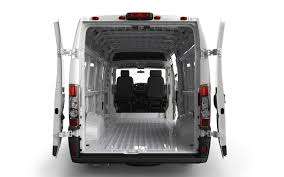Things are moving fast in the cargo van area after a long period of relatively static conditions, and RV manufacturers are being presented with some new opportunities and challenges as the situation changes. Let's look at some of the recent developments and how they'll affect RV upfitters.
Back in the last century, things were pretty much the same year after year. The VW van body was available and used by Westphalia, and all other campervans were built on domestic chassis produced by Detroit's Big Three, the Dodge, GM, and Ford body-on-frame vans. Upfitters picked one or two of these chassis and cranked out the models they offered.
The reason for this splendid isolation of the U.S. market from the rest of the world was the “chicken tax” – a 25 percent tariff imposed on light trucks imported into this country, part of a tit-for-tat protectionism episode that started with the U.S .exporting frozen cheap chicken to Europe. Blame Frank Purdue if you must, but this effectively eliminated foreign competition for the Big Three.

Starting in 2003, a new van arrived on the scene – Chrysler discontinued its venerable domestically manufactured van, and started importing and selling the first generation Mercedes Sprinter van. A redesign with new body arrived in 2007, and although the Mercedes-Chrysler partnership dissolved, the vans are still being sold as either Mercedes or Freightliners. Sprinter vans were radically different from domestically produced vans, with a unibody construction instead of body on frame, although they retain the traditional rear wheel drive configuration.
Unlike domestic vans, Sprinters could be purchased with a high roof, which eliminated the need to cut the sheet metal roof off and replace it with a fiberglass top or pop-up roof in order to get standing room inside the van. Many upfitters started using these vans within a year or two of their availability in North America. To get around the chicken tax, these vans were imported partially disassembled, and put back together once here, adding about 8% to the purchase price.

In the past two years, two more vans have started being marketed in North America – the Dodge Ram ProMaster and the Ford Transit. Both, like the Sprinter, are examples of vans being produced offshore for a considerable time being made available in the U.S. market.
The ProMaster is the U.S. version of the Fiat Ducato/Peugot Boxer/Citroen Jumper joint venture available in Europe in one version or another since 1981. Fiat owns Chrysler now, and the U.S. market is supplied from an assembly plant in Mexico, circumventing the chicken tax because of the NAFTA trade agreement. Another unibody design, with the additional innovation of front wheel drive, which allows for a lower floor in the cargo area, this van is available with either a V6 gas or a diesel engine.

Like the ProMaster, the Ford Transit has been in existence in various iterations since 1965 and marketed by Ford in Europe and Asia, but kept offshore by the chicken tax. Ford sold their domestically produced van until 2013, replacing it with the Transit, supplied by a new assembly plant in Missouri near Kansas City, and thus exempt from the chicken tax. It comes in two versions, a midsize front wheel drive model and the one used by RV upfitters, a full sized rear wheel drive model. Like the Sprinter and ProMaster, roof height options allow upfitters to buy chassis with standing room height inside. Engines available in the U.S. include a 5-cylinder diesel and two gas V6 engines.

The North American market has rejoined the global market after 50 years of splendid isolation, and American RVs will start to look more like the rest of the world's as these new chassis are adopted.
Better fuel economy and aerodynamics are some of the advantages of these new Mercedes, Ford, and Chrysler Fiat models.
The domestically produced GM chassis will continue to be available, largely because all development costs have long ago been written off, and they can be produced cheaply with existing manufacturing capacity as long as they continue to meet safety and emissions requirements.
4 Responses to “How Global Changes in Van Chassis Design Could Impact RVing”
Comments are closed.





May 06, 2015at10:25 pm, rvrv said:
Hey Camps, in 2013 you posted your interest in shipping your rv to Europe for a long term trip. Did you do it? I can’t find your post if you did. If you did please link it….I am interested in doing a trip like that but it looks difficult and was wondering if you found it just to be too much to take on. Thanks 🙂
May 14, 2015at10:19 am, sharon campbell said:
postponed it a year, since i spent all last summer slaving away at the factory. set to go in spring of 2016.
May 04, 2015at7:13 pm, Les Hopson said:
Campskunk, if we could Roadtrek to build one in a plain white cargo van with a few windows. That would give us the ultimate stealth RV! If yours was white it would be pretty close except for those alloy wheels.
May 14, 2015at10:18 am, sharon campbell said:
no, you can keep the stock steel wheels- the alloys are an option.